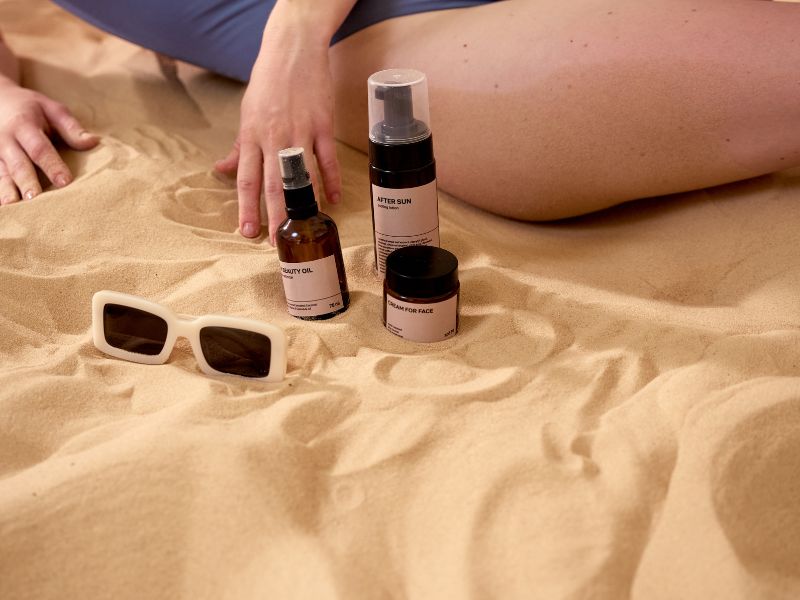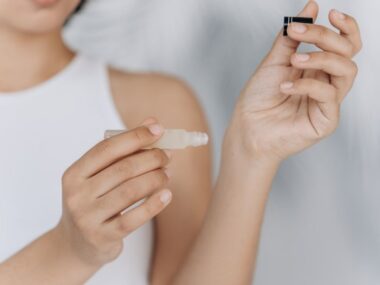As awareness of skin health grows, the importance of protecting ourselves from the harmful effects of the sun has become a topic of concern. Sunscreen is one of the most effective and accessible methods for preventing skin damage, premature aging, and skin cancer. However, the question of when sunscreen should be applied is not always clear, as factors like time of day, location, activity, and skin type all play a role. This article “When Should Sunscreen Be Applied?” into the best practices for applying sunscreen, why it’s essential, and factors to consider for optimal skin protection.
Why Sunscreen Matters
The sun emits ultraviolet (UV) rays, which are primarily divided into two types that reach the Earth’s surface: UVA and UVB rays.
- UVA Rays: These penetrate deeper into the skin, affecting connective tissues and blood vessels, and contributing significantly to skin aging, wrinkles, and hyperpigmentation.
- UVB Rays: These are responsible for sunburns and play a primary role in the development of skin cancer.
Both UVA and UVB rays are harmful and can damage the DNA in skin cells, leading to mutations and, potentially, cancer. Sunscreen acts as a barrier against these rays, either by reflecting them away from the skin (mineral-based sunscreens) or absorbing them before they can cause harm (chemical-based sunscreens).
When Should Sunscreen Be Applied?
Every Morning as Part of Your Skincare Routine
Dermatologists recommend applying sunscreen every morning, even if you plan to stay indoors. UV rays can penetrate glass windows, meaning that whether you’re at home, in the car, or in an office, your skin may still be exposed. By making sunscreen application a part of your morning routine, you create a habit that protects your skin against incidental exposure throughout the day.
- Best Time: Sunscreen should be applied as the last step in your morning skincare routine, ideally after moisturizer but before makeup.
- Reason: Regular use provides a baseline protection that adds up over time. A quick morning application helps establish a habit and protects against low levels of incidental exposure.
30 Minutes Before Sun Exposure
The effectiveness of sunscreen increases if it’s given time to be fully absorbed by the skin. Experts suggest applying sunscreen at least 15 to 30 minutes before stepping outside. This allows the product to form an even layer over the skin, offering better protection.
- For Chemical Sunscreens: Chemical sunscreens, which absorb UV rays and neutralize them, need to be absorbed into the skin to be effective. Therefore, applying them 15 to 30 minutes in advance is crucial for optimal performance.
- For Mineral Sunscreens: Mineral-based sunscreens (often containing zinc oxide or titanium dioxide) work by sitting on top of the skin and reflecting UV rays. While they provide immediate protection, allowing them to settle for 15 minutes can still enhance coverage.
Before Outdoor Activities
Outdoor activities like swimming, hiking, and sports increase the risk of sun exposure, especially in open areas where there is little to no shade. If you are going to be active outdoors, apply sunscreen generously beforehand.
- Swimming or Water Activities: Water reflects UV rays, intensifying their effect on the skin. Water-resistant sunscreens are highly recommended, but remember that no sunscreen is entirely waterproof. Reapplication is essential after swimming or any significant contact with water.
- Sweating and Physical Activity: When you sweat, sunscreen can wear off more quickly. Opt for a sport or sweat-resistant formula if you’ll be engaging in physical activities, and reapply according to the product’s instructions.
During Cloudy or Overcast Weather
One common misconception is that sunscreen isn’t necessary on cloudy or rainy days. In reality, up to 80% of UV rays can penetrate clouds and reach the skin, making sunscreen just as important on overcast days.
- Partial Cloud Cover: Clouds can sometimes enhance UV exposure by scattering sunlight, making it easier for rays to reach the skin from multiple angles. On days with thin or scattered clouds, UV levels can be as high as on clear days.
- Overcast Conditions: While heavy cloud cover reduces UV radiation, some UV rays still penetrate. It’s better to be safe and apply sunscreen daily, regardless of the weather.
When at High Altitudes or Near Reflective Surfaces
Altitude and reflective surfaces like water, snow, sand, and concrete can increase UV exposure significantly. For every 1,000 feet above sea level, UV radiation levels increase by approximately 10%. Snow can reflect up to 80% of UV rays, while sand and water can reflect up to 25%.
- High-Altitude Travel: Apply a broad-spectrum, high-SPF sunscreen if you’re skiing, hiking, or participating in other outdoor activities at high altitudes.
- Beach or Snow Environments: Be extra cautious and reapply sunscreen frequently. The reflection of UV rays from these surfaces means you’re being exposed to direct sunlight as well as additional reflected light.
When Using Medications or Treatments that Increase Sun Sensitivity
Some medications and skin care treatments can increase your skin’s sensitivity to sunlight, making it even more susceptible to sunburn and other UV-related damage. These include antibiotics, certain anti-inflammatory drugs, and acne treatments such as retinoids and benzoyl peroxide.
- Medications: If you’re taking medication that increases sun sensitivity, consult your healthcare provider for advice, and apply a higher SPF sunscreen.
- Skin Treatments: Treatments like chemical peels, laser therapy, or exfoliants can also make the skin more vulnerable to sun damage. Extra sun protection is critical when using these products to avoid irritation and hyperpigmentation.
Reapplying Throughout the Day
Sunscreen does not provide all-day protection and needs to be reapplied every two hours when outdoors, or more frequently if you’re swimming, sweating, or towel-drying. This is crucial because even water-resistant sunscreens wear off over time.
- How Much to Apply: For the face, a nickel-sized amount is recommended, while the body generally requires about an ounce (a shot glass full) to be covered adequately.
- Tools for Reapplication: Sunscreen sticks, powders, and sprays are convenient options for reapplying without disrupting makeup or clothing, making them ideal for use throughout the day.
Choosing the Right Sunscreen
The timing of sunscreen application is only effective if the product provides the right protection. Here are some tips to help you choose an appropriate sunscreen:
- Broad-Spectrum Protection: Look for sunscreens labeled “broad-spectrum,” which means they protect against both UVA and UVB rays.
- SPF 30 or Higher: SPF 30 blocks approximately 97% of UVB rays, while SPF 50 blocks about 98%. For daily use, SPF 30 is sufficient, but higher SPF is recommended for extended outdoor activities.
- Water-Resistant Options: Water-resistant sunscreens are beneficial for activities where you may sweat or come in contact with water. However, remember to reapply after 40 to 80 minutes of swimming or sweating, as directed on the label.
- Skin Type: Consider your skin type and any allergies or sensitivities. Mineral-based sunscreens tend to be gentler on sensitive skin, while chemical sunscreens are often more lightweight and blendable.
Sunscreen Myths and Misconceptions
To ensure sunscreen is used correctly, it’s important to debunk some common myths:
- Myth: Dark Skin Doesn’t Need Sunscreen
While darker skin contains more melanin, which offers some natural UV protection, it is still susceptible to sun damage and skin cancer. Sunscreen is essential for all skin tones. - Myth: Sunscreen Is Only Needed on Sunny Days
As mentioned, UV rays penetrate through clouds, so daily application is necessary regardless of the weather. - Myth: A Single Application Lasts All Day
Sunscreen wears off with time, water, and sweat, so reapplication is essential, especially after two hours in direct sunlight. - Myth: Sunscreen Blocks All UV Rays
No sunscreen blocks 100% of UV rays. Wearing protective clothing, seeking shade, and avoiding peak sun hours (usually between 10 a.m. and 4 p.m.) are also recommended.
Conclusion
The question of when sunscreen should be applied is often met with simple answers, but the truth is that timing, frequency, and type of product are all important for effective sun protection. Applying sunscreen every morning, 30 minutes before exposure, and reapplying as necessary can greatly reduce the risk of skin damage and long-term health issues. Sunscreen use should be combined with additional protective measures, like wearing UPF-rated clothing and avoiding peak sun hours, to maximize skin health and resilience against UV radiation. Embrace a proactive approach to sun protection, and you can enjoy the outdoors safely while maintaining healthy, radiant skin.






